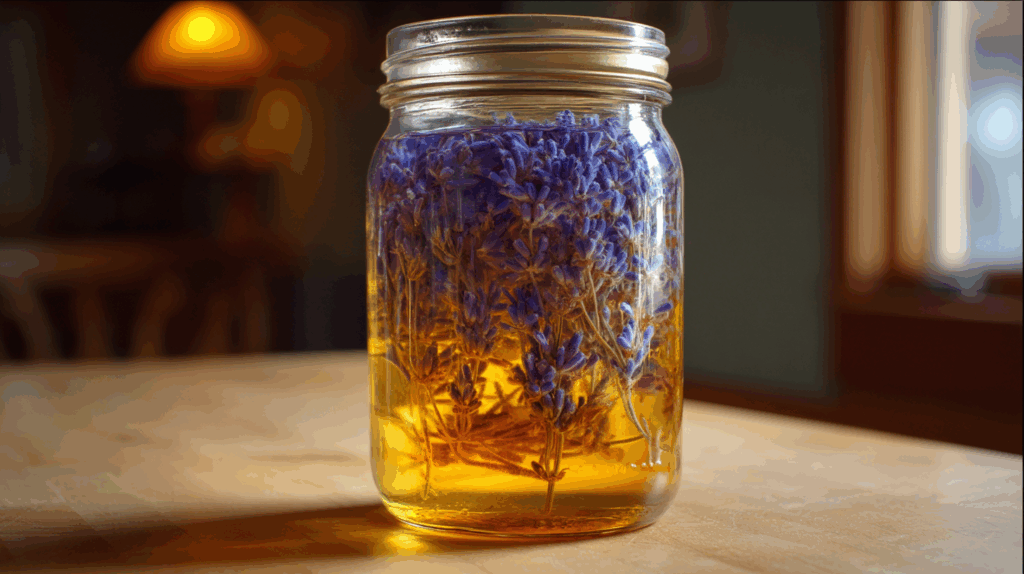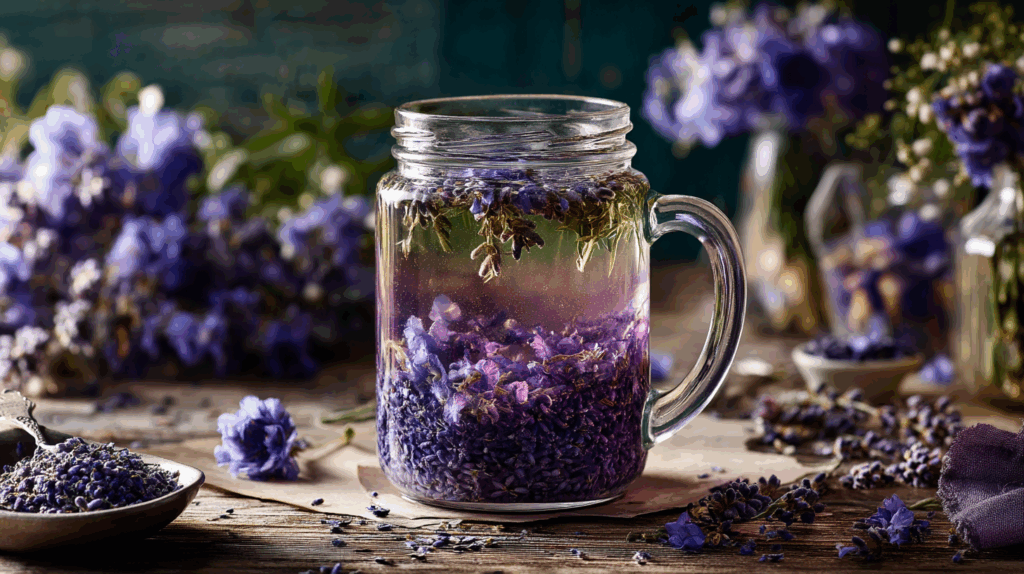
How to Make Lavender Oil: A Step-by-Step Guide
Lavender oil is one of the most popular essential oils due to its soothing aroma, calming properties, and versatility in both beauty and health applications. Whether you’re looking to add a personal touch to your homemade skincare products or simply want to enjoy the calming scent of lavender in your home, making your own lavender oil is both simple and rewarding.
This article will guide you through the process of making lavender oil at home, discuss why you might want to make it, and offer important safety considerations to keep in mind.
Why Make Lavender Oil?
Lavender oil has numerous uses, and it’s much easier (and cheaper) to make at home than you might think. Here are some reasons why you may want to create your own lavender oil:
Relaxation & Sleep Aid: Lavender is known for its calming properties, which can help reduce stress and anxiety. Many people use lavender oil in aromatherapy to promote better sleep and relaxation.
Skin Care: Lavender oil has anti-inflammatory and antioxidant properties, making it great for soothing irritated skin, reducing acne, or healing minor cuts and burns.
Natural Scent: If you’re looking for a chemical-free way to add fragrance to your home, lavender oil is an excellent option. You can use it in diffusers, homemade cleaning products, or as a natural air freshener.
Making lavender oil at home ensures that you’re using pure, fresh ingredients without any added chemicals or preservatives.
What You’ll Need to Make Lavender Oil
Before getting started, you’ll need the following materials:
Lavender flowers – Fresh lavender works best, though you can also use dried lavender if fresh isn’t available.
Carrier oil – This will be the base of your lavender oil. Common carrier oils include olive oil, coconut oil, or jojoba oil. Choose one that suits your needs (e.g., coconut oil for skin care or olive oil for general use).
A glass jar – A clean, glass jar is essential to store the oil in.
A strainer or cheesecloth – To filter out the lavender flowers once the oil has infused.
A small saucepan (if using the heat method) – For gently warming the oil if you prefer to use a quicker method.
Learn The Two Best Methods Of Making Lavender Oil
 Method 1: The Infusion Method (Cold Method)
Method 1: The Infusion Method (Cold Method)
This is the most common and simple method of making lavender oil at home. The infusion process allows the lavender flowers to naturally release their essential oils into the carrier oil over time.
Steps:
Harvest the Lavender: Begin by picking fresh lavender flowers. If you’re using dried lavender, make sure it’s free of stems or debris.
Prepare the Jar: Fill a clean glass jar halfway with the lavender flowers. Don’t overfill it; you want the flowers to be packed tightly but not crushed.
Add the Carrier Oil: Pour your chosen carrier oil over the lavender flowers, making sure to cover them completely. Leave a small gap at the top of the jar to allow for expansion.
Seal the Jar: Secure the lid tightly on the jar and shake it gently to mix the flowers with the oil.
Store and Wait: Place the jar in a warm, dark place, like a cupboard or a closet, and let it sit for about 2-4 weeks. Shake the jar every few days to ensure the flowers remain immersed in the oil.
Strain the Oil: After the infusion period, strain the lavender flowers from the oil using a fine mesh strainer or cheesecloth. The resulting oil is your homemade lavender oil.
 Method 2: The Heat Infusion Method (Faster Method)
Method 2: The Heat Infusion Method (Faster Method)
This method involves gently heating the lavender and oil together to speed up the infusion process.
Steps:
Prepare the Lavender and Oil: As with the cold method, fill a clean glass jar halfway with lavender flowers, then pour your chosen carrier oil over them.
Heat the Mixture: Pour the oil and lavender mixture into a small saucepan. Warm the mixture over low heat for about 2 hours, being careful not to let it get too hot (keep the temperature around 100°F to 110°F). If the oil gets too hot, it can burn and lose its beneficial properties.
Cool and Strain: After heating, let the mixture cool, then strain the flowers from the oil using a fine strainer or cheesecloth.
Store: Transfer the strained lavender oil into a clean, dark glass bottle for storage.
Note: The heat infusion method is faster but can sometimes produce a slightly less potent oil than the cold infusion method. However, it’s a good option if you’re in a hurry.
Safety Considerations
When making and using lavender oil, keep the following safety tips in mind:
Dilution is Key: Essential oils like lavender are potent and should always be diluted with a carrier oil before applying to the skin to avoid irritation. A good rule of thumb is to use about 10-12 drops of lavender oil per ounce of carrier oil.
Patch Test: Always perform a patch test before using lavender oil on larger areas of your skin. Apply a small amount to your forearm and wait 24 hours to ensure you don’t have any allergic reactions.
Storage: Store your lavender oil in a cool, dark place away from sunlight. If stored correctly, it can last for up to a year. However, if you notice any change in smell or consistency, it’s best to discard it.
Consult with a Healthcare Provider: If you’re pregnant, nursing, or have any health concerns, it’s always a good idea to check with your doctor before using essential oils, as they can sometimes interact with medications or conditions.
Final Thoughts
Making lavender oil is not only simple, but it’s a rewarding skill that allows you to create a natural, versatile product for relaxation, skincare, and home use. Whether you choose the slow, methodical infusion method or the quicker heat method, you can enjoy the benefits of this soothing essential oil in no time.
If you want to learn more about essential oils and the forgotten herbs that can support your self-sufficient lifestyle, I highly recommend The Forgotten Home Apothecary book. This book is an invaluable resource for anyone interested in traditional methods of healing, making homemade remedies, and living off the land. Inside, you’ll find detailed instructions on creating your own herbal tinctures, oils, and remedies to improve your health and well-being.
Embrace the power of nature and gain more confidence in your ability to make herbal products at home. The Forgotten Home Apothecary will help you tap into your ancestors’ knowledge, equipping you with the skills needed to thrive without relying on modern pharmacies.
Do you make any of your own herbal oils or remedies? Share your thoughts and experiences in the comments below! We’d love to hear from you and learn together.
You May Also Like:
Discover The Most Effective Natural Antibiotic Growing In Your Backyard (Video)
The Insulin Plant – Costus Igneus

 Method 1: The Infusion Method (Cold Method)
Method 1: The Infusion Method (Cold Method) Method 2: The Heat Infusion Method (Faster Method)
Method 2: The Heat Infusion Method (Faster Method)